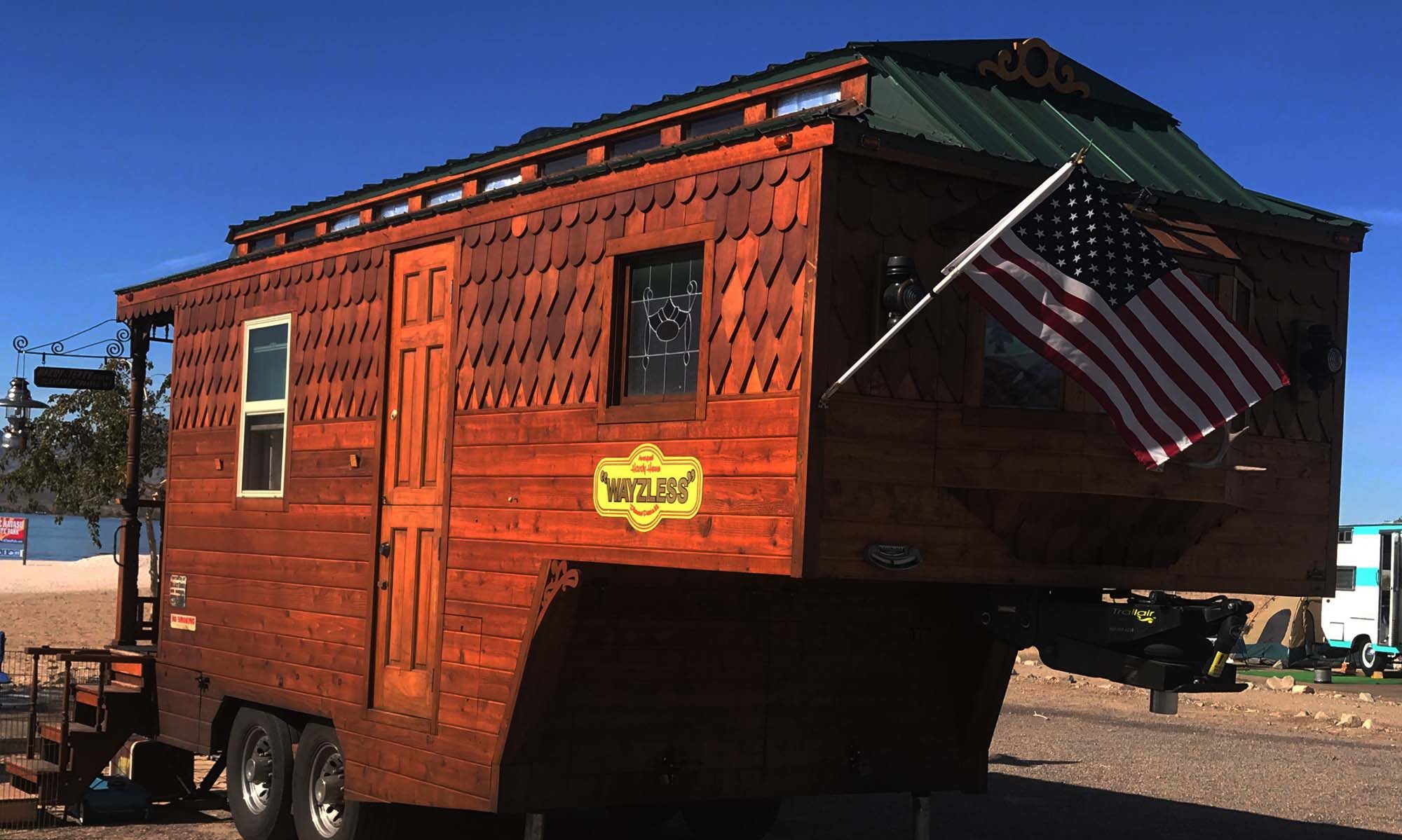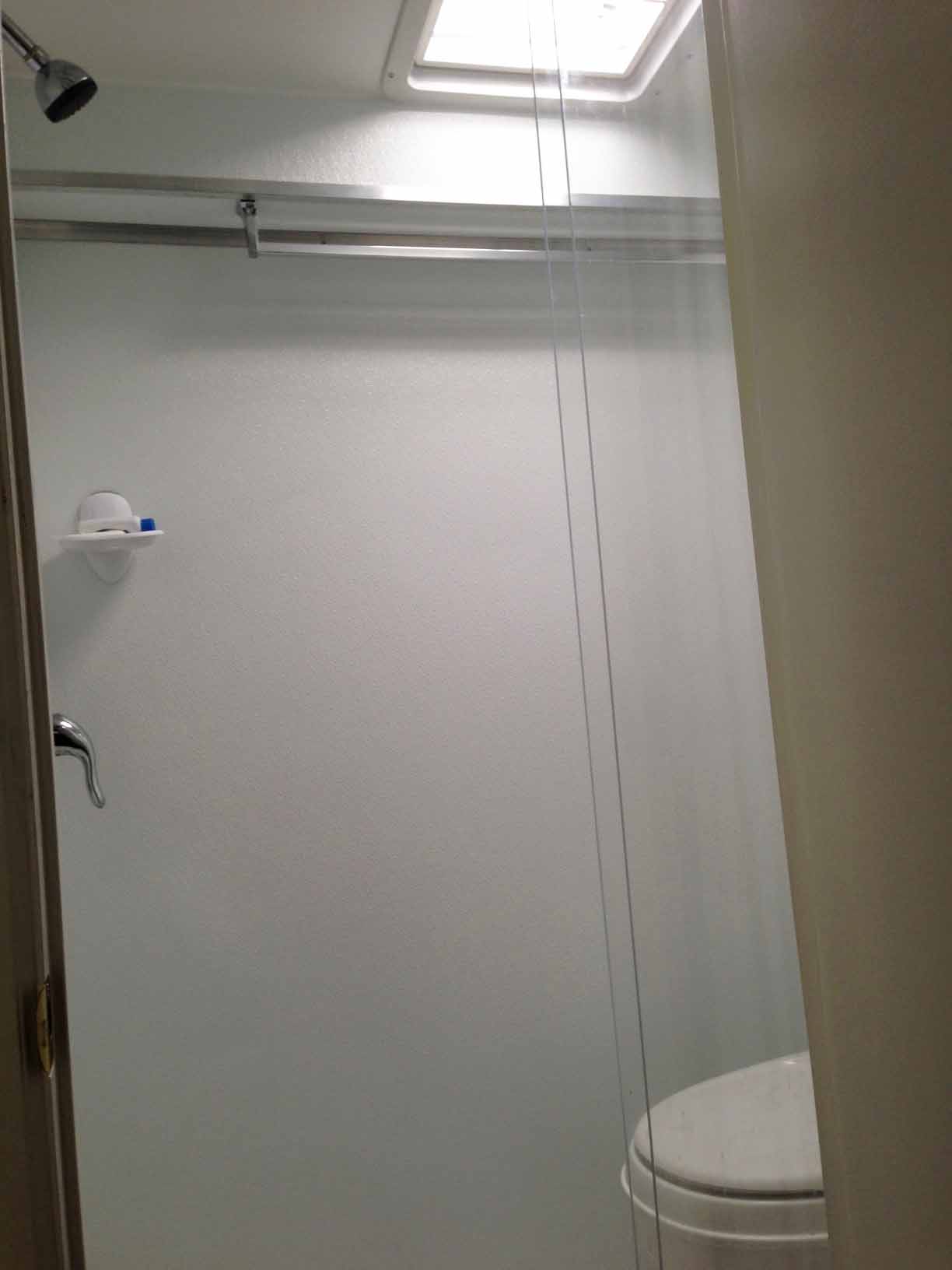Pro’s and Con’s to consider
Here are some thoughts to think long and hard about, dealing with constructing and using small RV spaces. There are pros and cons with any component of course.
Also, priorities on space and what you are willing to sacrifice for something else with a higher priority. Everyone is different. This is a personal viewpoint based on years of experience, with nearly every category of component.
Ranked from the best being number 1, to least desirable
1. Flapper Flush Toilet into a vented “Black” Holding Tank.
2. Self Contained Flapper/Flushing Cassette toilet with exterior waste tank dumping access (Specifically Thetford C402C or equivalent)
3. Other types of self contained Cassettes, Porta-pottie, Chemical toilets, Composting Toilets
4. WAG Bag configurations of all types using a bucket, bucket with seat, folding seat, bags absorbing agent, etc.
I have had every type of RV/trailer and component out there at some point. Not all brands certainly. Like anything else, there are better products based on brand and most likely cost.
The number one “must have” for me. No toilet smells, or mildew smells, in the confined living space.
The more I have to mess with a component, the less I like it. The more I have to touch something involved, the more I dislike it.
I personally do not want a toilet that has any set up/tear down involved. I want easy quick access. I want easy to keep clean and sanitary.
Mostly I am a solo traveler. Sometimes 2 people at the most. The more people involved, the more of a hassle any toilet limitation, or complication, becomes.
The more a toilet moves away from your home toilet familiarity and operation, the more confusing it is for someone traveling with you…which often equates to problems for you!
It’s especially unpleasant for the one doing the maintenance, operating oddities, dumping, cleaning, etc.
In confined spaces, drips, leaks, splashes, and other unsanitary situations, soon become very apparent.
The more intervention that involves you to “mess” with something, manually do something, get your hands in it, clean up something, the less I like it. There is a reason commercially built RV’s and most sewer dumps have evolved to where they are today.
Most commercially built RV vehicles have underneath holding tanks, a slinky hose attachment, a gate valve, and match up to all the RV sewers, and RV dump station options. Some even have gone to holding tanks and a macerator pump that also conforms to RV park sewer drops and dump stations. Most of the toilets themselves operate very close to any household toilet. Think about why they have evolved to that!!
I have had every type of toilet. I am not sold on composting types at all. Sorry to those that don’t agree. That type is nearly on the bottom of my least favorite list for a toilet. You might have to deal with a urine separator, crank something, or clean something. Some you even have to plan electrical and allot battery bank power requirements to power some of them.
Anything with more moving parts, seals, or power requirements, is bound to fail at some point. Fail more often than something simpler. I want to minimize fail points as much as possible. Back to the “I don’t want to have to mess with it”!
Most of the other types (Other than 1 & 2 on my list). Such as porta-pottie, cassette type, composter, WAG, etc., that is arranged in such a manner. Where any waste container, has to be removed or carried anywhere in the interior. That is completely out, in my book. Been there, done that. Leaks and accidents happen no matter how diligent you are.
If the toilet slides under a cabinet, in a cabinet, on a pull-out support, and not in a waterproof containment tray of some sort, you are asking for trouble.
I have even used buckets and WAG bags too. They are better than nothing to be sure, but on my undesirable list. The better ones, that come with absorbent and odor eliminating gel, can be a bit costly for the use you might get out of them. Great for emergencies. I carry a couple in all my vehicles. Many use all kinds of DIY set-ups to avoid costs.
To confine any leaks, drips, splashing, misses, spillage, etc., due to having a toilet on board. I want it permanently mounted in a shower/toilet combo configuration. So, any toilet leak goes down the shower drain and gives a visual indicator without leaking into the vehicle first. I never want the possibility of toilet waste spills or leaks into the coach/van. I want surrounding wall surfaces that are waterproof and easy to wipe to sanitize. No tight spaces, space behind the toilet, under a platform, crevices, and surfaces, you can’t easily get to or clean.
Any toilet, regardless of type, must have exterior access to deal with any waste dumping, or flush water filling if it doesn’t operate off the normal plumbed water.
.
At least scope out the Thetford C402C before making a decision. But it has limitations in waste capacity. More than two people would be an issue for any duration longer than 3 days or so, of boondocking.
Flapper valve flush type RV/Marine Toilets that dump into a larger vented black holding tank, are in my opinion, the best way to handle more than one or two people. Or to provide extended waste capacity, for longer boondocking. They also generate no smells in a confined space if installed and used correctly. Operation is very close to what most people are used to at home.
I say that in the paragraph above (larger vented holding tank) even though I installed the Thetford C402C in my latest Sprinter Conversion. Due to limited holding tank space issues in a small Sprinter van (Sprinter 144). Also, I didn’t want a floor, and roof penetration, to vent an under vehicle holding tank.
So I rank this C402C configuration as #2 as next best. Mine has been in for multiple years. No smells. Access to pull and dump the tank is on the exterior.
The total footprint of my Sprinter shower/toilet combo is just shy of 30×30 inches. Yes cramped. But in a small van, the shower/toilet combo area also doubles as a coat closet or a place to place snowy or wet footwear and rain gear. Any water runs down the shower drain into a gray holding tank.
Two examples below in recent builds.
1. The first one is in a standard length (144) Sprinter Van.
With an Interior footprint of about 26×26 inches. Just enough to accommodate the commode and caulk all joints. Exterior Footprint including the walls about 30×30 Inches. This is in a 2019 Sprinter Van 144 in the very rear passenger side corner. It also incorporates part of the wheel well.
Hand laid fiberglass bathtub style lower section. The walls are covered in white FRP. The floor is standard tile/stone laid with silicone adhesive, then grouted with silicone.
Used a Thetford C402C Toilet.
This one you can stand or sit on the toilet to shower. It is a tight space. But a necessary evil with the “usable” space available in a small van.
2. The second one is in a Cargo Trailer Conversion
Using an off the shelf Fiberglass Shower pan from Loews. (34×48 inch shower pan). Walls are FRP over Luan plywood. So the interior footprint is roughly the size of the shower pan.
The shower pan was hole bored to accept the foot flush Thetford Aqua-Magic type RV toilet, that drops into the black tank mounted directly below the floor.
On this rig there is a 25-gallon black tank. As well as a 25-gallon gray tank. 30 Gallon fresh water tank.
Vent/Fan was purposely mounted over the bathroom for several reasons. Added headroom when showering. To avoid damage from rain if vent is open. Any rain goes down the shower drain. It also vents the moisture out so showing doesn’t put all the humidity into the vehicle that can result in excessive condensation. It provides nice natural lighting.
This bathroom has a solid hinged privacy door, as well as a double sliding plexiglass shower door.
![]()


